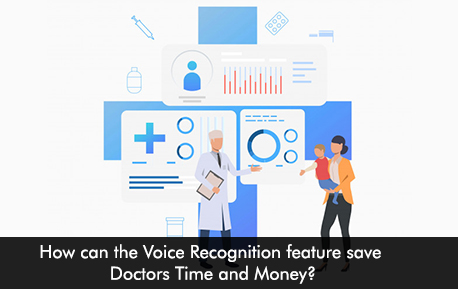Voice recognition feature in your Electronic Medical Records (EMR) software is a powerful tool that helps to enhance communication and ease the physician’s stress while charting. Patients desire that their doctor listens to them, but when healthcare providers are focusing on computer monitors while manually typing notes this misses out on important non-verbal signals and patient’s expressions. This hampers the experience and frustrates the patient as the doctor is not completely concentrating on their patient. The voice recognition feature allows doctors to easily take detailed notes and while focusing on the patient which helps to enhance the patient experience and the charting process.
Voice recognition technology is now trading with conventional dictation in the healthcare sector which helps to reduce transcription costs and transcription errors. If the EHR software system is designed in a way to incorporate command-based responses then the voice recognition tool can be intuitive.
The benefits of voice recognition technology
Voice recognition technology has numerous advantages for the healthcare provider. It has helped clinicians to save the time associated with tedious typing which has helped to reduce paper charts and any errors that can arise from human inputting. Voice recognition is seen as a time-efficient tool that allows doctors to have prompt views and access. The charting results can be instantly reviewed by the provider and can correct any errors on time and fill out any missing information fields.
When practices switch to and EMR software with voice recognition features then overheads are reduced by 60% and there is a 20% rise in billable revenue. Providers don’t need to hire expensive transcriptionist which saves about $30,000 to $50,000 yearly.
Efficient charting can be ensured with superior command and control voice navigation with precise speech recognition. Clinical documentation is enhanced and responds with specific types of procedures, techniques, care plans, and symptoms. Accurate and enhanced clinical documentation also supports precise coding and billing procedures.
Productivity levels are improved as speaking notes directly into the software system saves a lot of time for the clinician and other medical members which can be used to improve the patient care delivery process and keep patients a top priority.
Additional revenue can be generated by scheduling patient appointments in the time that was previously used for time-consuming charting procedures.
Conclusion
Your EMR software vendor must offer robust voice recognition functionality which can benefit your medical practice by supporting quick and efficient charting and reduce overall costs. Integrated speech recognition technology can help make practices productive and also realize savings. Doctors enjoy the speech recognition feature for its convenience, speed helping them to simplify the charting process with maximum accuracy.







